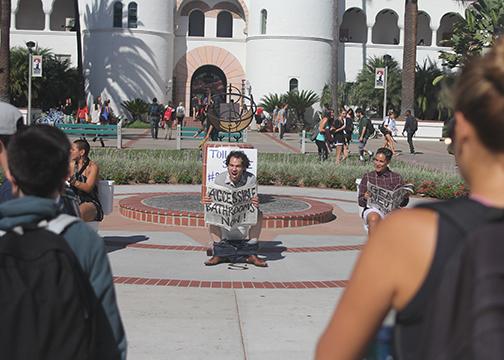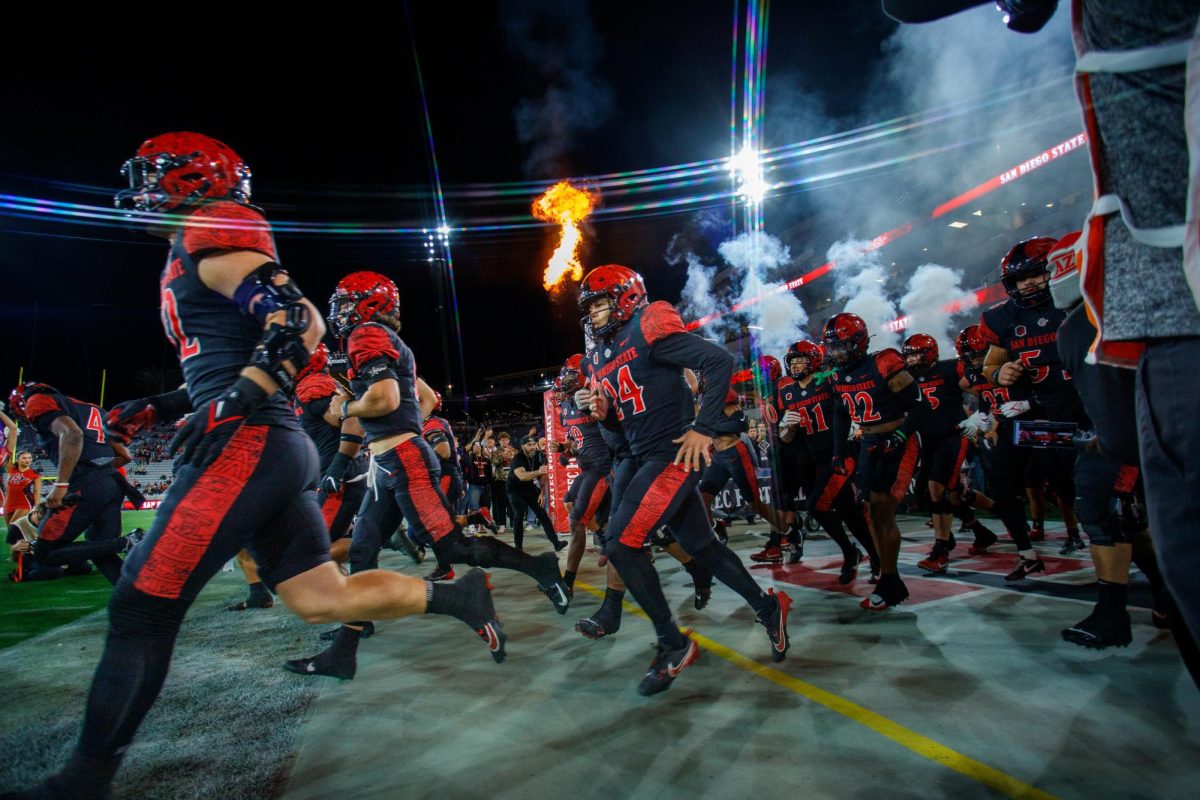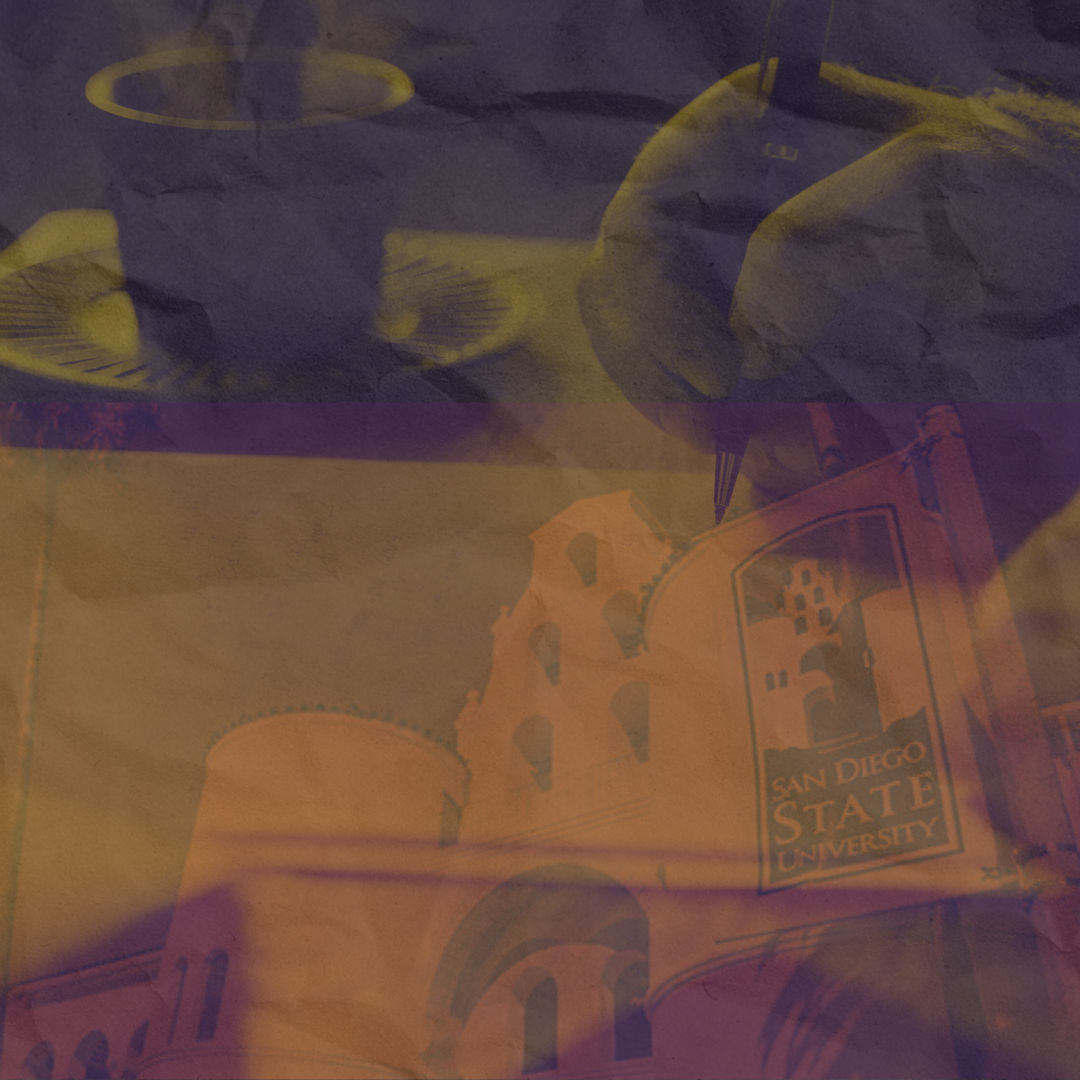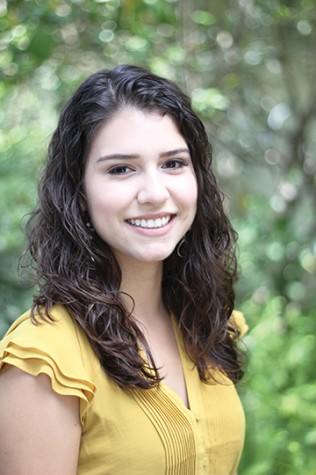Following the “S–t In” protest held late last month at San Diego State, questions have been raised by the trans* community and concerned parties over the lack of timeliness and transparency by administration in addressing the need for gender-neutral restrooms on campus.
SDSU has 15 single occupancy gender-neutral restrooms available, University Architect Bob Schulz said. There are more than 300 gender-specific restrooms throughout campus.
Schulz said SDSU has complied with the California Building Code in identifying the number of men’s and women’s restrooms needed on campus. Although there is no mention of gender-neutral restrooms in the code, SDSU has, in recent years, begun to make single-stall restrooms gender-neutral by labeling them with signs of a triangle inside of a circle.
“I understand and can empathize with the need to have more spaces for anyone to use the restroom, you don’t want to be inconvenienced on a large campus, there’s a lot of people, you want to make sure everyone feels comfortable and welcomed and supported,” Chief Diversity Officer Aaron Bruce said. “We try to move as quickly as possible to make sure their needs are being met.”
Of the 15 gender-neutral restrooms on campus, typically nine are publicized, which are listed on the Pride Center’s website as well as in a recent SDSU NewsCenter article. The article was promoted as a #TriviaTuesday post on Facebook and Twitter and was published the day of the “S–t In” protest. It received negative comments on Facebook and was later hidden from the SDSU timeline feed.
Some of the comments were from trans* students who felt “tokenized” while other commenters said SDSU’s broad commitment to diversity and conclusion means “intolerance of traditional values.”
Media Relations Manager Beth Chee said the SDSU communications team did not take down the post and believes that Facebook took it down.
AT Furuya, a member of the Trans* Action and Advocacy Student Coalition, said in an earlier interview that the issue lies in the current locations and number of gender-neutral restrooms available for students, faculty and staff.
Furuya — who identifies with the pronouns they, them and theirs — said they have a three-hour graduate seminar class in the six-story College of Arts and Letters building, but there are no gender-neutral restrooms in the building.
To go to the bathroom during middle-of-class breaks, Furuya said they walk to West Commons, where the closest gender-neutral restroom is. Furuya said the walk cannot be made in the 10-minute break time given, nor is it guaranteed that someone won’t already be using it. Class time is sacrificed or they must “hold it,” which can result in various health issues, such as dehydration or urinary tract infections.
“There’s a lot of thought that goes into what we do with those spaces,” Bruce said. “And I foresee, in the future, that universities and organizations will begin to reevaluate the types of spaces that they are making available for visitors. As the needs of communities evolve, San Diego State tends to be right there on the cutting edge in terms of taking into consideration the needs of the community because it impacts our employees as well as our visitors and their families as well as students.”
He said students may be unaware of the actions SDSU has taken toward inclusion of all campus communities because they are busy working towards their degrees.
“We’re constantly reevaluating the effectiveness of all of our services and all the things that we provide for our community,” he said. “I think that facilities pays a lot of attention to everything not just from a legal perspective but from a campus climate perspective to make sure that the needs of everyone is met. That’s not an easy job. But I think they do an excellent job.”
Bruce said that facilities management also takes into consideration the needs of disabled students, faculty and staff in constructing these restrooms.
Bruce and Tiana Vargas, the president of the TAASC force, emphasized that these spaces are not just to be used by the trans* community but by the entire community such as visitors with young families. These restrooms can be helpful when a father or mother needs to take their young daughter or son to the restroom.
Vargas said the trans* community also hopes to soon receive hormones from Student Health Services as well as for more staff and faculty to receive training on gender non-conforming ideas.
“You can be outed very easily,” Vargas said. “It’s unsafe right now. My body is unsafe because I can develop urinary tract infections, the misinformation on campus is unsafe and the ignorance makes it unsafe.”
“As a university, when something happens, we are really good about celebrating when something good happened but I think it’s always important to say ‘here’s the next point in the horizon, this is the next thing for us to go for,’” Randy Timm, the director for student life and leadership, said. “When we celebrate, let’s celebrate. But let’s not forget that there is still work to be done.”
Timm said he, along with Assistant Director of Union Events and Communication Freddie Sanchez, would like to have a proposal on the issue by Nov. 20 which marks the Trans* Day of Remembrance, an event in remembrance of trans* individuals killed due to anti-transgender prejudice and hatred. Timm says he hopes to discuss other broader issues with administrators and students.












